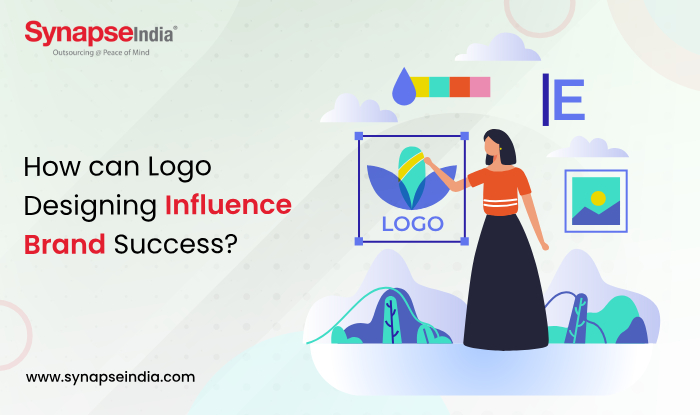 24 Apr 2024
24 Apr 2024
The logo is an imperative part of building any image of the brand. Being a crucial aspect it helps in building the brand of any business. A well-designed logo not only keeps your business apart from the competition but also communicates your brand’s value and personality to attract potential customers. So what makes a logo good? A good logo keeps your audience engaged and communicates on behalf of your brand. What are the essential design tips that help to influence the success of the brand? Well, in this blog we will provide you with most of the crucial information on logo design and how a great logo helps your business to communicate.

For businesses, logo design is essential because it forms the visual foundation of their brand identification. Its importance stems from its capacity to convey a brand's personality, values, and mission to the intended audience. Establishing trust with potential clients requires not just rapid recognition but also professionalism and trustworthiness, both of which are communicated by a well-designed logo. Maintaining a consistent logo design across several touchpoints serves to uphold brand identity and provide a unified brand image. Furthermore, a logo that resonates with consumers on an emotional level can build a strong bond with them that promotes brand affinity and loyalty. Another important factor is versatility since logos must appear well in a variety of settings and media. A logo can endure by differentiating itself from competitors and emulating classic design elements.
Logos are essential elements of a brand's identification; they are visual representations of the principles, characters, and products of an organization. It's critical to comprehend the importance of each logo feature and how it affects brand perception to use it to your advantage when creating a brand image. Here's how to make the most of each component:
The font selection establishes the tone for communication and reflects the personality of the brand. Whether it's sophisticated and elegant or bold and futuristic, typography should complement a brand's identity and appeal to its intended audience.
Colors are effective instruments for brand marketing because they arouse associations and feelings in people. The target market, industry, and brand values should all be reflected in the color choice. Using color consistently improves brand awareness and builds emotional bonds with customers.
Symbols or icons can be used to graphically convey a brand's distinctive qualities, core principles, or range of products. These components function as enduring visual cues that convey brand identification quickly and aid in setting the company apart from rivals.
A logo's readability and visual impact are influenced by its composition and shape. The visual appeal and versatility of the logo across all platforms and apps are guaranteed by a well-balanced and unified design.
Establishing trust and brand recognition requires consistency. By using the logo consistently on all brand touchpoints—websites, social media accounts, and marketing materials—you can strengthen brand identity and increase consumer familiarity.
Businesses can effectively harness fonts, colors, symbols, and composition to create a powerful and unified brand image that resonates with their audience by using these components in logo design carefully and keeping consistency in branding activities.

A strong brand logo is necessary for several reasons, all of which add to a company's overall impact and success. Here are several main justifications for the significance of a strong brand logo:
A brand's logo frequently serves as the initial point of interaction with its target market. The brand's identity and values are visually represented by it, creating a lasting and significant first impression.
A well-designed logo makes it easier and faster for customers to identify and recognize a company. Consumers are encouraged to trust and be loyal to a brand when it is consistently used on a variety of platforms and marketing collateral.
In a congested market, a unique logo helps a brand stand out from rivals. It conveys the brand's distinctive qualities, principles, and products, making it stand out and drawing in potential clients.
A professionally created logo communicates professionalism and integrity, informing customers that the company is reliable and respectable. It fosters trust in the caliber of goods and services the company provides.
Customers feel more familiar and emotionally connected to a brand that has a strong logo. Customers may eventually develop brand loyalty as a result of this relationship and choose the company over rivals regularly.
A strong brand logo is an important tool that helps create brand recognition, influence consumer attitudes, and propel business success. In today's cutthroat industry, spending money on a well-designed logo is crucial to building a solid and enduring brand identification.
A well-designed logo is the foundation of a brand's identity, communicating to the intended audience the essence, character, and values of the enterprise. It is essential for leaving a lasting impression, promoting brand awareness, and establishing client trust. Businesses may differentiate themselves from rivals, build a strong brand presence, and eventually propel success in the marketplace by investing in considered logo design that fits the brand's goals and appeals to its target audience. Thus, for any business hoping to succeed in the current competitive landscape, it must comprehend the relevance of logo design and its power to affect brand success.

